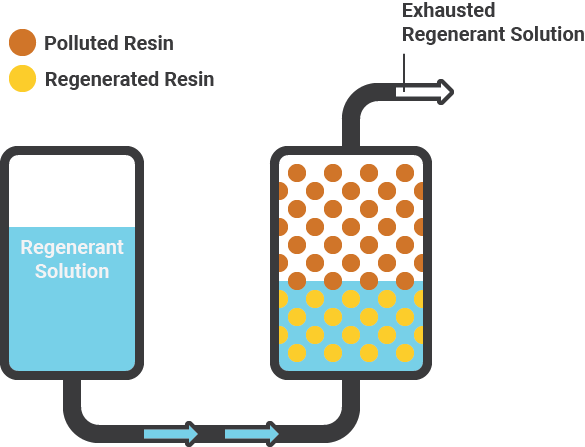Here at Nationwide DI Water Solutions, we use a method known as batch processing to regenerate resins. Once the resin is exhausted, it can be sent to either of our locations in Minnesota or Tennessee to be regenerated or properly disposed of if you prefer to only use virgin resin. The exhausted resin is emptied into a batch tank separation vessel and put through a computer-controlled regeneration process where flows and chemicals are continuously measured and monitored. When properly managed, the batch method is the most cost-effective method for DI regenerations.

Regenerated Resin
Process
Hydrochloric (HCL) or Sulfuric acid is used to regenerate cation resin and Sodium Hydroxide (Caustic Soda) is used to regenerate anion resin. These chemicals allow us to provide our customers with industry-leading resin every time. HCL provides higher capacities than sulfuric acid, but it is more expensive. Sulfuric acid can cause calcium sulfate fouling of the cation resin. Potassium Hydroxide can be used for regeneration anion resin, but typically costs more than Sodium Hydroxide. The exact concentration of chemical and flow rates are essential components in maintaining a top-quality resin regeneration process. Proper concentration is important because:
▲ If the strength is too high, there will be either insufficient contact time or bed cleaning.
▼ If the strength is too low, a strong driving force won’t exist to execute a complete regeneration.

After the regeneration process the metals that are removed are properly treated and disposed of in a MPCA approved landfill. We are licensed and monitored by the local Sanitary District and the Minnesota Pollution Control Agency. You can have peace of mind that the metal waste from exhausted resin is properly taken care of when sent to Nationwide DI Water Solutions.
Contact Nationwide DI Water Solutions Today
Our staff are readily available to answer any questions, resolve concerns, and provide you with an estimate for our services.

